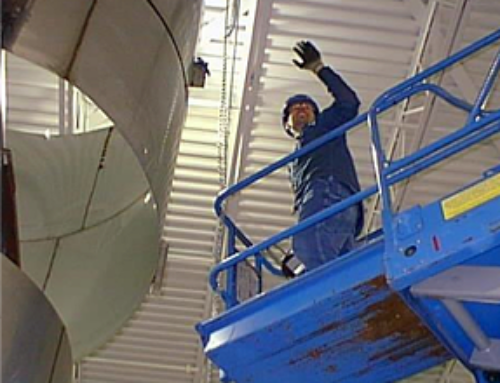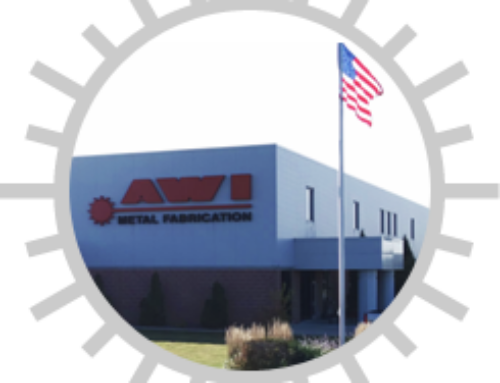If knowledge is power, then applied knowledge is powerful.
Debunking Safety Myths
Safety myths and rumors often circulate around every scenario or subject in the construction industry. From an employee’s training requirements, to onsite documentation needs, all the way to acceptable protection/prevention methods. This article will help set the record straight on a few common safety myths.
1) Myth: As long as you stay 6 feet away from the leading edge fall hazard, you don’t need fall protection.
Wrong!
This one strikes a personal chord with me. I have heard this statement by numerous individuals/trades over the years, mostly by non-roofers. I can only assume where this belief came from, but perhaps these individuals are confusing it with the 6-foot vertical fall protection requirements.
OSHA only has seven systems in regards to fall protection, found in 29 CFR 1926.502. The first mentioned is the only engineering control solution, guardrails.
Guardrails (1926.502(b)): constructed at 39-45 inches in height and are capable of supporting 200lbs of outward/downward force, provide the safest and most cost effective solution. Guardrails eliminate the fall exposure for all individuals in the work area, as well as the potential for any human error from setting up a fall arrest system improperly. If the work activity is on the roof, a parapet wall meeting the 39-inch height requirement could satisfy OSHA’s fall protection requirement as well.
Engineering control solutions should always be the go-to solution when it comes to addressing any hazard, as personal protective equipment should be considered a last line of defense.
The remaining options fall into more of a personal protective equipment option. These solutions however provide more of a “hit the ground” protection than the actual fall protection. Remember, the ultimate goal should be to prevent the exposure, then reduce it. This reasoning is why engineering controls to eliminate a hazard are considered the best solution. The remaining options that will provide the employee protection and keep the company in compliance are: safety nets, personal fall arrest systems, positioning device systems, warning line systems, controlled access zones and safety monitoring systems.
- Safety net systems (1926.502(c)) are advantageous in certain applications; however, their use requires extensive installation/maintenance requirements found in the above-mentioned standard.
- Personal fall arrest systems (1926.502(d)) are probably the most common fall protection solution, but can offer the biggest “false sense of security” protection than any of the other options. Employees are tasked to find an anchorage capable of supporting the required 5,000lbs of force, plus ensure the system is rigged so that free fall is not more than 6-feet, nor contact any lower level. Sadly, if employees are not adequately trained or checked on periodically, some will tie off to insufficient structures, just so they can “get the job done.” Not to mention that most employees receive a harness, a 6-foot shock absorbing lanyard, and then asked to apply those devices to almost every scenario. Since every fall hazard is unique, this approach can put the employees and the company in a precarious situation.
- Positioning devices (1926.502(e)) are typically used in applications where an employee will need to remain in a stationary position/location for an extended period.
- Warning line systems (1926.502(f)) are extremely useful, but present our next safety myth…
2). Myth: Warning lines can be set a 6-feet from the leading edge.
Partially true.
Warning lines may be set at 6-feet for roofers or roofing work activity. However, all other trades are required to have warning lines set 15-feet from the leading edge fall hazard.
Warning line systems are easy to install, but are an ongoing and at times overwhelming challenge to appropriately utilize and maintain on construction sites. Here are a few of those reasons:
- Warning line systems require regular and continual maintenance, and as such expend precious time setting and resetting instead of employees being able to perform other tasks.
- Once the warning line is set, additional fall protection requirements still exist outside the warning line system itself (i.e. personal fall arrest systems or safety monitoring).
- And depending on the work activity being performed, the warning lines may need to be repositioned away from the fall hazard (i.e. if any self-propelled or mechanical equipment is being utilized, lines must be 10-feet away from leading edge).
Controlled access zones (1926.502(g)) have applications that stretch beyond just an employee’s fall protection, but are applied to guard/warn against falling objects (i.e. erecting precast concrete panels or overhand bricklaying). Control access zones can also be utilized for holes in a deck or floor or around a skylight in the roof. Control access zones must comply with several additional regulations found in 1926.501(b)(9) and 1926.502(k).
Safety monitoring systems (1926.502(h)) are a last resort to fall protection. This standard permits the employer to designate a competent person to “monitor” employees engaged in leading edge work, however provides no actual protection to the exposed employee. This option may not be acceptable for the work though, particularly if mechanical equipment is used or if the monitor cannot be on the same walking/working surface as the exposed employees.
Some of these solutions have a greater potential to open the door to human error, especially if the individuals lack sufficiently training. I have mentioned in several of my training sessions that training needs to go beyond when someone can answer a question or do a task correctly. Training needs conducted and reviewed until they can’t get it wrong.
3). Myth: Training employees will make them work safe, or they will be safe because someone told you that you would be.
Wrong!
There is no doubt that training is an important part to a successful safety program and should help prevent accidents/injuries. But it is only a small part. There are several other components to a successful safety program that need to happen simultaneously to help reduce accidents. Leadership supervision is needed to correct unsafe behavior, encourage safe behavior and conduct effective accident and near-miss investigations. And these findings should be shared with of the employees. Engage them to acquire their input to develop safer processes, correct unsafe conditions and measure your progress. If knowledge is power, then applied knowledge is powerful.
Aaron Wissen, CHST
Safety Resources, Inc.




